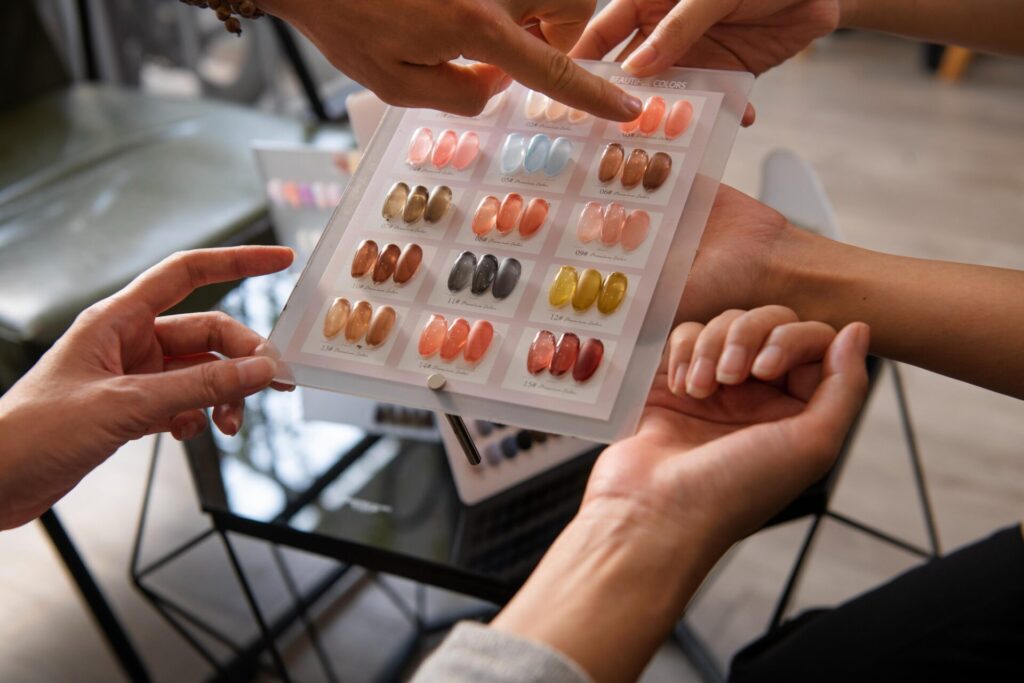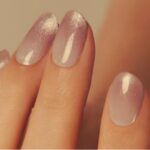Extensions for acrylic nails are enhancements that are made by combining of liquid and powder acrylic.
They offer length and durability as well as durability to natural nails, which is why they are an ideal choice for people who prefer long, elegant nails that don’t require waiting long for the natural development of their nails.
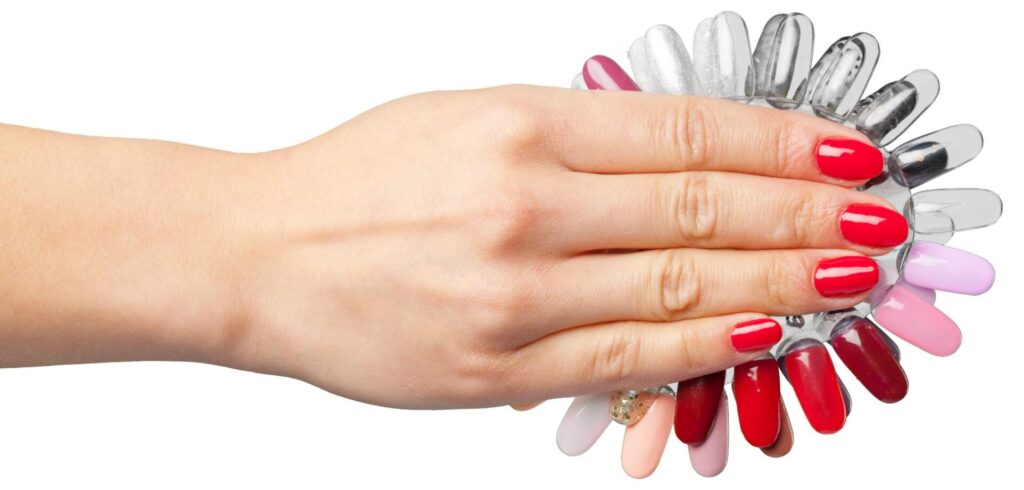
Brief History of Acrylic Nails
Acrylic nails are in use since the 1950s. They were originally created for dental use, prior to being modified for use in beauty.
As time has passed, they’ve evolved, by introducing better formulas, enhanced durability, and a broad variety of designs that can be customized.
Materials & Tools Needed
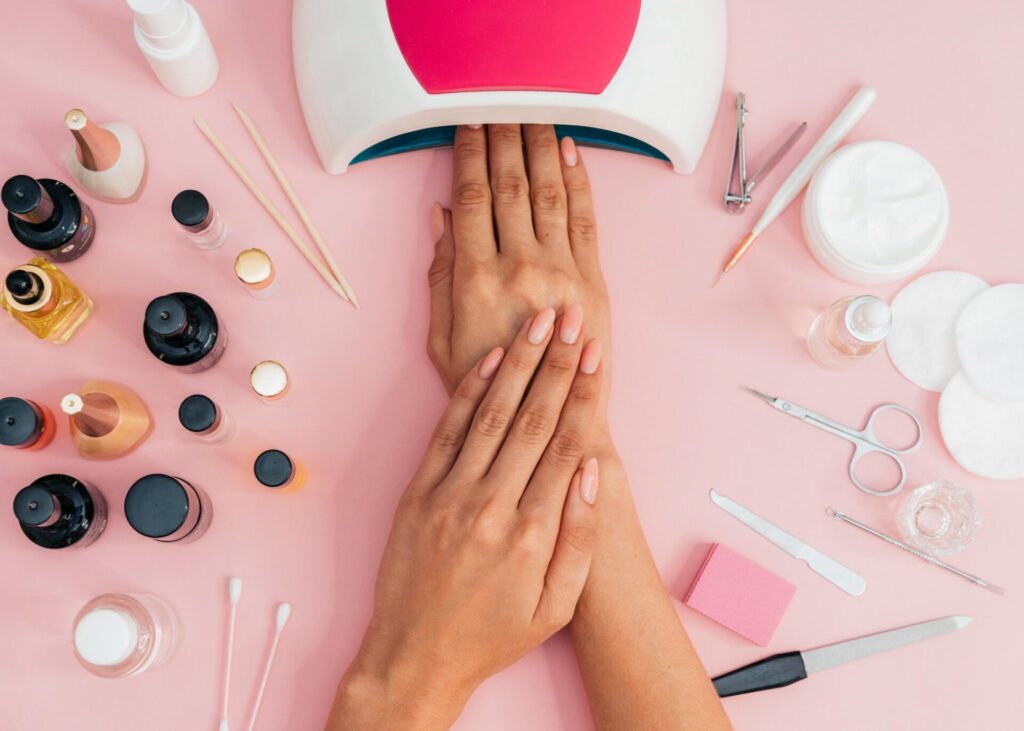
Acrylic Powder & Liquid
The main ingredients in acrylic nails are monomer liquid and the acrylic powder are able to harden when mixed and form a solid extension on normal nails and nail tips.
Selecting high-quality materials will ensure greater adhesion and durability.
Nail Tips vs. Forms
Nail tips are extensions made of plastic that are glued to the nail’s natural surface, whereas forms can be used to shape extensions directly.
Customers should decide which one best suits their personal style and nail kind most.
Essential Tools (Brushes, Buffers, Files, etc. )
An effective acrylic application needs professional tools, which include the use of a fine brush to ensure precise placement of the acrylic as well as buffers that give smoothness, and nail files to shape. Making sure you have the right tools will improve the final outcome.
Application Process
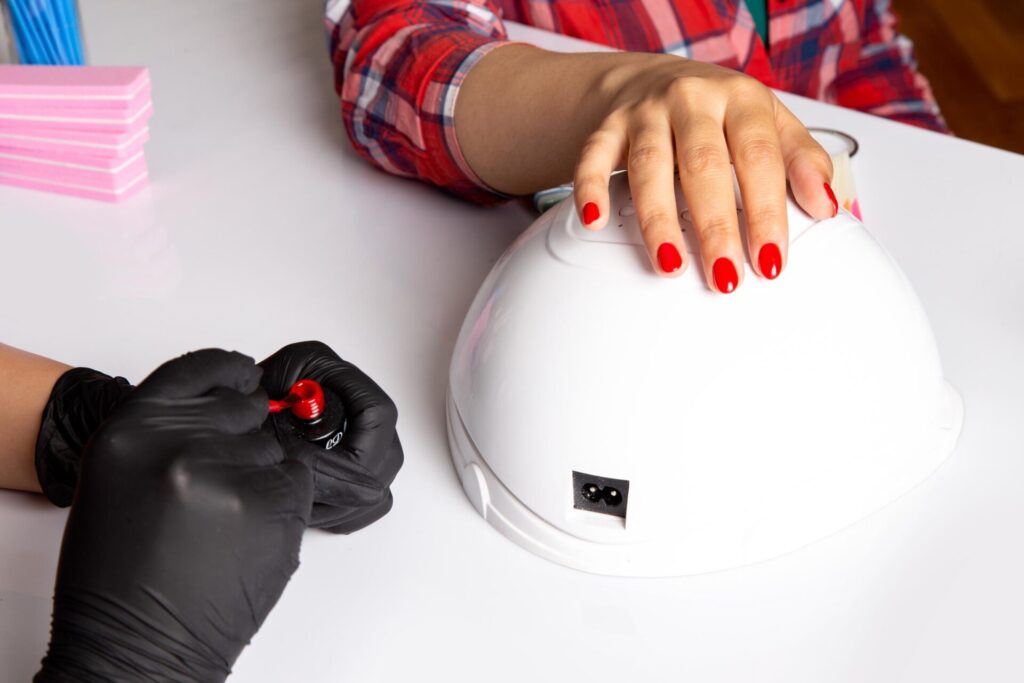
Nail Preparation
Proper preparation includes cleaning, filing and polishing nails in order to ensure that the acrylic stays in place. If you do not take this step, it could lead to falling or weak extensions.
Applying Nail Tips or Forms
Nail tips are attached to the natural nail, and then cut to lengths that are desired, while forms are positioned under the nail to allow direct sculpting with acrylic.
The decision is based on the look you’d like and the ease of application.
Mixing and Applying Acrylic
The correct ratio of liquid to powder is essential to a smooth and easy application. A lot of liquid can make the acrylic runny. Likewise, too little causes an unworkable, thick consistency.
Shaping and Filing
Once the acrylic is set and is shaped, it can be done with an e-file or nail file to create the desired nail shape, which can be coffin, square, almond or stiletto.
Finishing Touches (Polish, Design, or Top Coat)
After shaping and polished, acrylic nails can be polished using nail polish or gel and decorated with nail art or sealed with a top coat for added quality and durability.
Benefits of Acrylic Nail Extensions
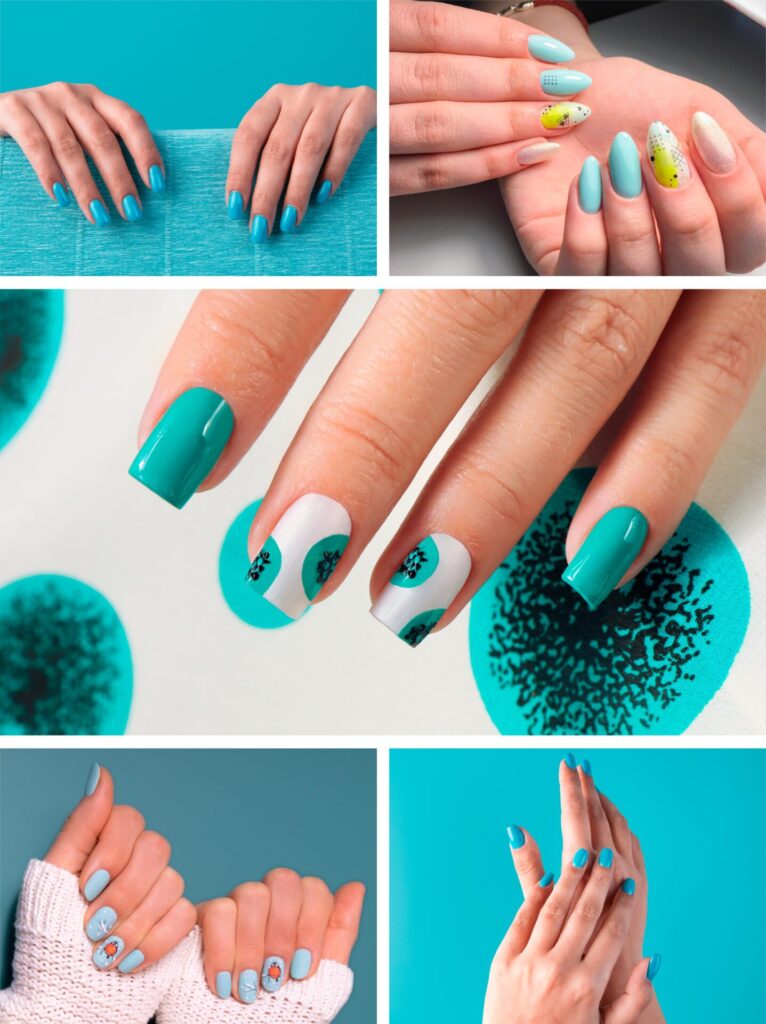
Durability & Strength
Acrylic nails are renowned for their durability, which makes them ideal for those who have weak or fragile natural nails. They resist breaking and can last for a long time with regular treatment.
Versatility in Length & Shape
As opposed to natural nails, acrylic nails can be cut into any length, shape or size ranging from natural-looking and short to dramatic and long.
This versatility makes them attractive to a lot of buyers.
Customization & Nail Art Possibilities
Acrylic nails are a source of unlimited creativity, such as glitter, ombre effects gems 3D design, and many more.
They are ideal for people who are looking for unique and fashionable nail designs.
Common Issues & How to Fix Them
Lifting and Peeling
Lifting happens when the acrylic begins to separate away from natural nails typically due to poor treatment or exposure to oil.
Regular maintenance and techniques for adhesion can keep this from happening.
Cracking or Breaking
While acrylic nails are durable but excessive force or impact can cause them cracks.
The right length for your nail and being aware of your daily activities can help minimize the chance of cracking.
Yellowing of Acrylics
Acrylics can turn yellow because of exposure to UV rays inferior products and chemical reaction.
Utilizing high-quality acrylics as well as an UV-blocking top coat can prevent discoloration.
Acrylic and. Other Enhancements to Nails
Acrylic Vs. Gel Extensions
Gel extensions are soft and pliable than acrylics. They provide an ethereal feel. However, acrylics tend to be more durable and last longer.
Acrylic vs. Polygel
Polygel is a blend of acrylic and gel providing greater flexibility and a simpler application. But, acrylics are more durable and accessible.
Acrylic vs. Dip Powder
Dip-powder nails involve laying colored powders over the bonding agent. It is an alternative to acrylics that is light however they lack an equivalent degree in expansion and control over shaping.
Maintenance & Aftercare
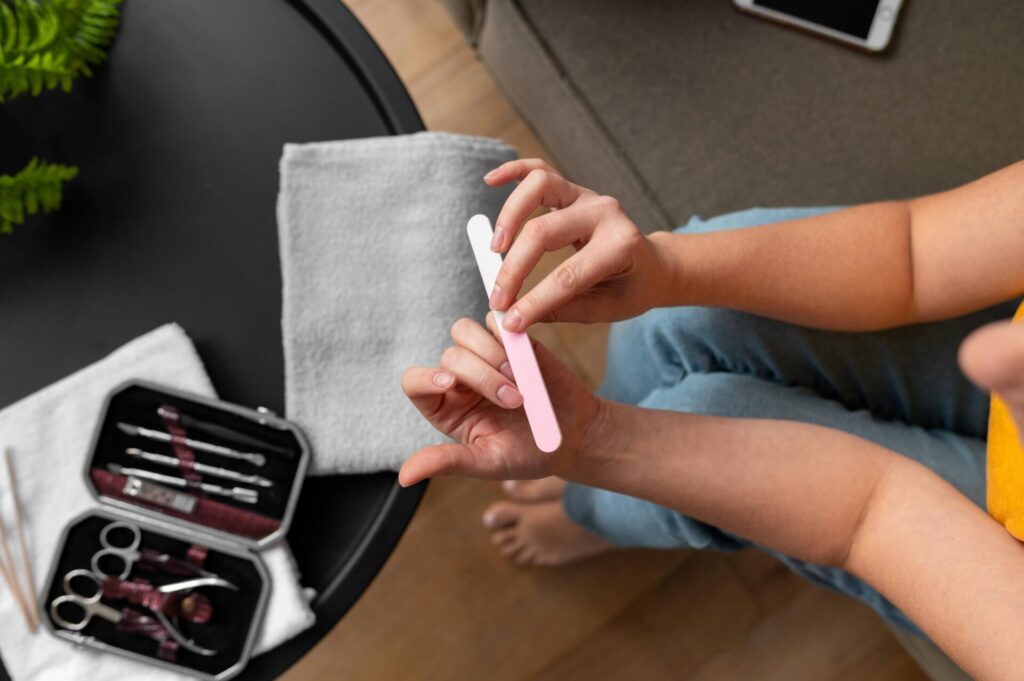
How to Keep Acrylic Nails Looking Fresh
Regularly moisturizing, staying clear of harsh chemicals and applying a top coat that protects prolong the life for acrylic nails.
When to Get Fills
When natural nails develop, acrylics require refills every 2 to 3 weeks to maintain a consistent appearance and avoid lifting.
How to Avoid Damage
Avoid using nails for tools, use gloves when cleaning, and make sure they are well-hydrated to avoid the brittleness.
How to Remove Acrylic Nails Safely
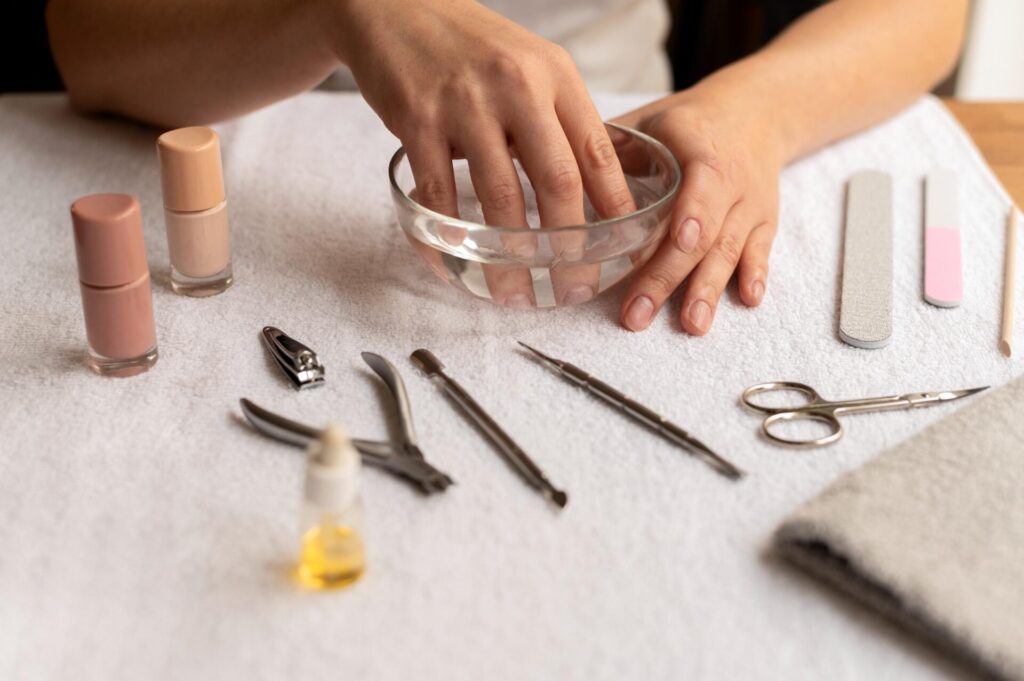
Acetone Soak Method
The most secure way to get rid of acrylics is placing them in acetone and soaking for 15 to 20 minutes.
This will soften the acrylic and allow so that it is easy to remove it without damaging your natural nail.
Gentle Filing Technique
Another method is applying your acrylic layer slowly but this takes patience and care to avoid causing excessive filing of the natural nail.
Do’s and Don’ts
Do moisten after removal. Don’t pull off acrylics violently and never use an nourishing treatment after removal.
Are Acrylic Nails Safe?
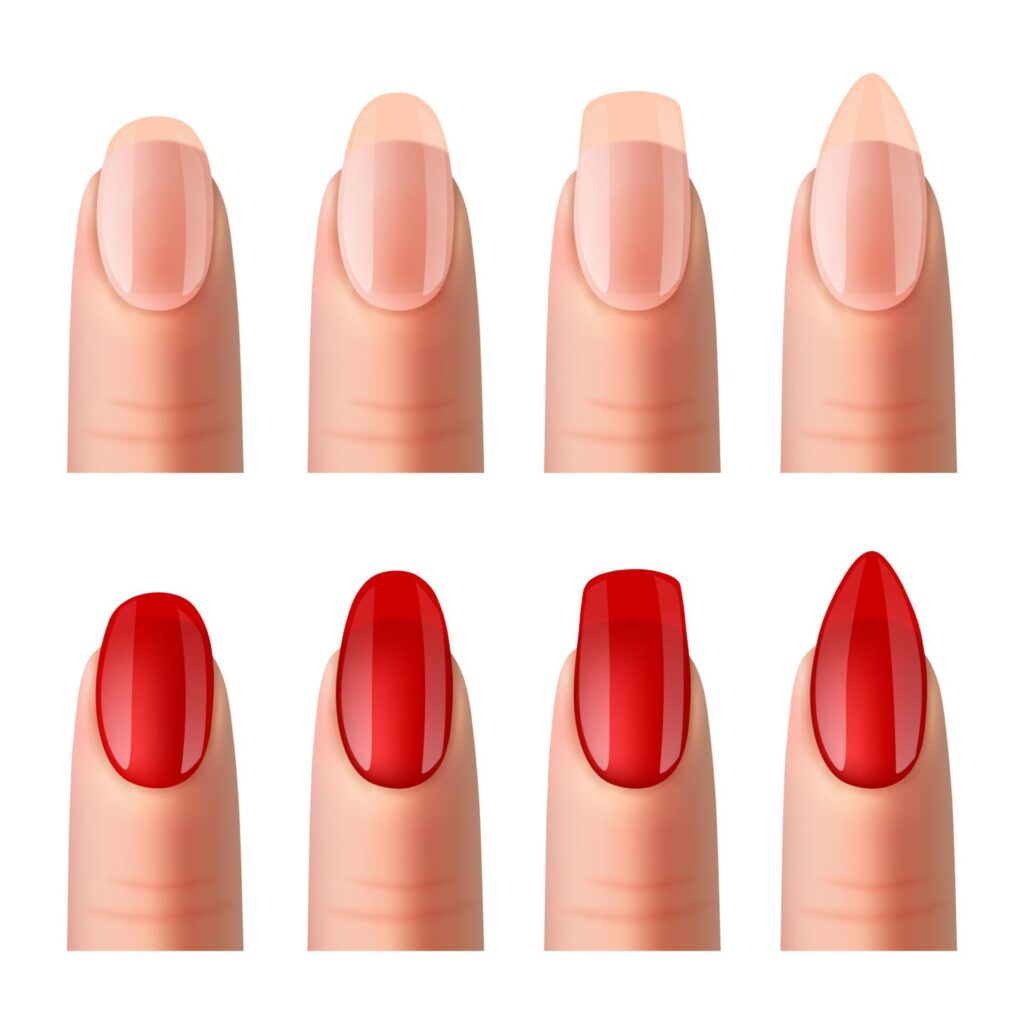
Potential Risks & Precautions
Utilizing acrylic nails too often may make natural nails weaker in time. Making sure the nails are properly removed and applied minimizes the risk of fungal infections or thin nails.
Choosing a Reputable Nail Technician
A trained technician will ensure proper application, which minimizes damage while ensuring the longevity of. Reading reviews and researching salons can help you find a reliable professional.
Conclusion
Final Thoughts
Acrylic nails are a great choice for people who need long, strong and custom-made nails. Knowing the benefits, process and the need for maintenance will help buyers make an informed choice.
Who Should Get Acrylic Nail Extensions?
Acrylic nails are ideal for anyone who wants durable, fashionable nails. For everyday use, for special events or nail art enthusiasts who want to stand out They are a great option to everyone.

